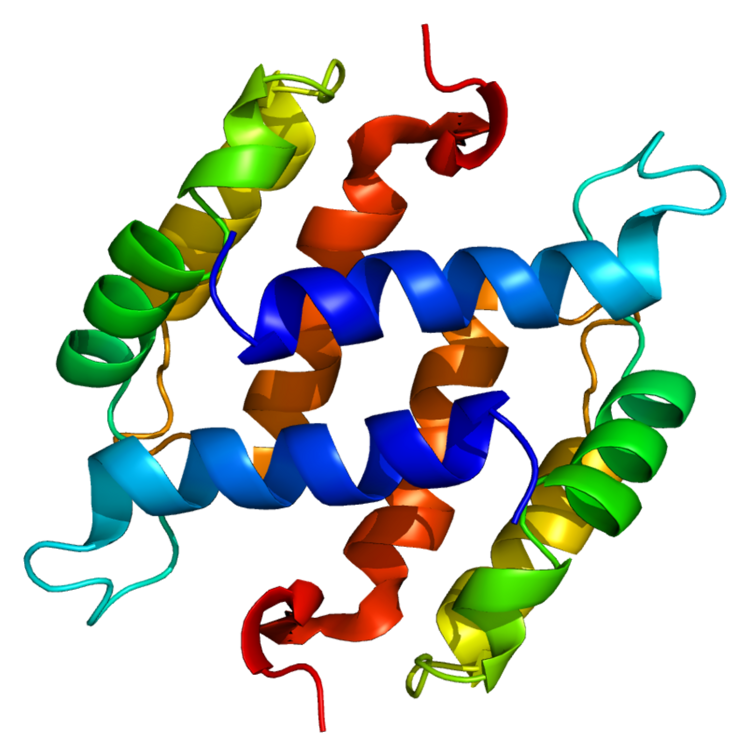Symbol S_100 InterPro IPR013787 SCOP 1cnp | Pfam PF01023 PROSITE PDOC00275 SUPERFAMILY 1cnp | |
 | ||
The S100 proteins are a family of low-molecular-weight proteins found in vertebrates and characterized by two calcium-binding sites that have helix-loop-helix ("EF-hand type") conformation. There are at least 21 different S100 proteins. They are encoded by a family of genes whose symbols use the S100 prefix, for example, S100A1, S100A2, S100A3. They are also considered as Damage-associated molecular pattern molecules (DAMPs) and knockdown of AHR downregulates the expression of S100 proteins in THP-1 cells.
Contents
Structure
Most S100 proteins are homodimeric, consisting of two identical polypeptides, which are held together by non-covalent bonds. S100 proteins are structurally similar to calmodulin. On the other hand, they differ from calmodulin on the other features. For instance, their expression pattern is cell-specific, i.e. they are expressed in particular cell types. Their expression depends on environmental factors. To contrast, calmodulin is a ubiquitous and universal intracellular Ca2+ receptor widely expressed in many cells.
Normal function
S100 proteins are normally present in cells derived from the neural crest (Schwann cells, and melanocytes), chondrocytes, adipocytes, myoepithelial cells, macrophages, Langerhans cells, dendritic cells, and keratinocytes. It may be present in some breast epithelial cells.
S100 proteins have been implicated in a variety of intracellular and extracellular functions. S100 proteins are involved in regulation of protein phosphorylation, transcription factors, Ca2+ homeostasis, the dynamics of cytoskeleton constituents, enzyme activities, cell growth and differentiation, and the inflammatory response. S100A7 (psoriasin) and S100A15 have been found to act as cytokines in inflammation, particularly in autoimmune skin conditions such as psoriasis.
Pathology
Several members of the S100 protein family are useful as markers for certain tumors and epidermal differentiation. It can be found in melanomas, 100% of schwannomas, 100% of neurofibromas (weaker than schwannomas), 50% of malignant peripheral nerve sheath tumors (may be weak and/or focal), paraganglioma stromal cells, histiocytoma and clear cell sarcomas. Further, S100 proteins are markers for inflammatory diseases and can mediate inflammation and act as antimicrobials.
S100 proteins have been used in the lab as cell markers for anatomic pathology.
Human genes
CRNN; FLG; FLG2; HRNR; RPTN; S100G; TCHH; THHL1;
Nomenclature
The "S100" symbol prefix is derived from the fact that these proteins are soluble in 100%, i.e. saturated, ammonium sulfate at neutral pH. The symbol has often been hyphenated, but current gene and protein nomenclature, such as HGNC nomenclature, does not use hyphens in symbols.
